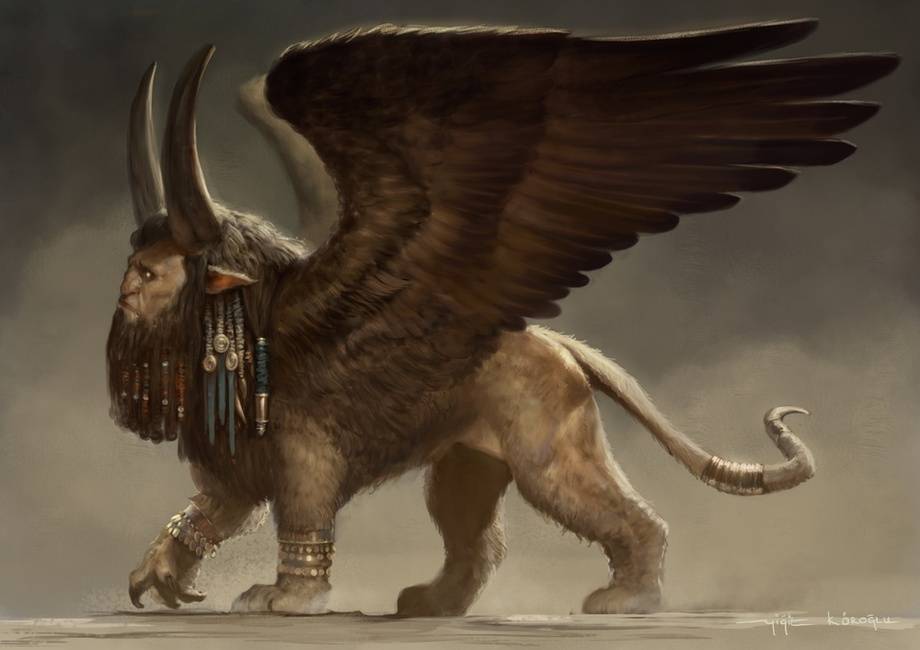The Lamassu name is not without its problems. The Sumerian word Lama, translated into Akkadian Lamassu, refers to a tutelary deity, usually female. She is often depicted as a standing figure introducing guests to another higher god. So she is actually a servant. Its male counterpart is called alad or šêdu in Akkadian.During the Neo-Assyrian Empire (c. 883-612), great monumental bulls, often winged and always with human heads, were placed to guard the entrances to royal palaces such as Khorsabad and Nineveh. The general idea behind this was that they ward off evil. (In technical jargon: they were apotropaic figures.) They usually have five legs.Protective lion-bodied deities are also known and are commonly referred to as "sphinxes".
These monumental statues were called aladlammû ("guardian spirit") or lamassu, meaning that the original feminine word was now applied to a more macho demon. Interpreted in a modern way, they combine the power of a bull, the freedom of an eagle and the intelligence of a human being. Female lamassu are called apsasû.
The Lammasu are also known from the palaces of the Achaemenid kings.Those of Pasargadae are now gone, but in Persepolis we can still see them at the Gate of All Nations. Helmets are visible on the unfinished door; In the building identified as the council chamber or tripylon ("triple gate"), the lamassu served as column capitals.
Similar mythical creatures were called "gopathas" in Persian. It would be interesting if we could establish a connection between the Asiatic Lamassu bull-man and the Greek Minotaur bull-man, although the former has a man's head and a bull's body and the Minotaur has a man's body and a bull's head.
Description: Khorsabad, Lamassu
Date: ca.700 a. C.
Creator: Marco Prins
Museum: Paris, Louvre
License: CC0 1.0 Universal
Linked: Berossus on Creation, Dur-Šarrukin (Khorsabad), Lamassu (Bullman)
Categories: Assyria Labels: Mythology , sculpture


